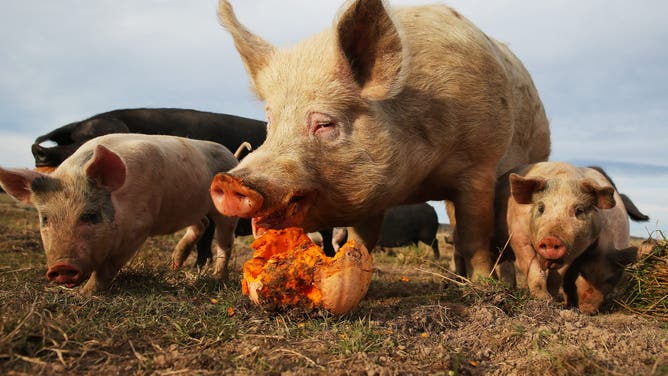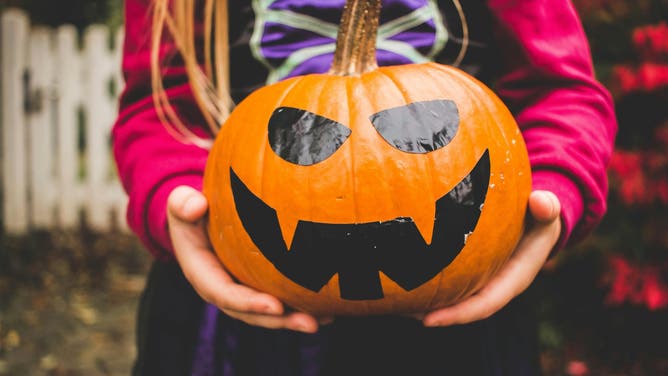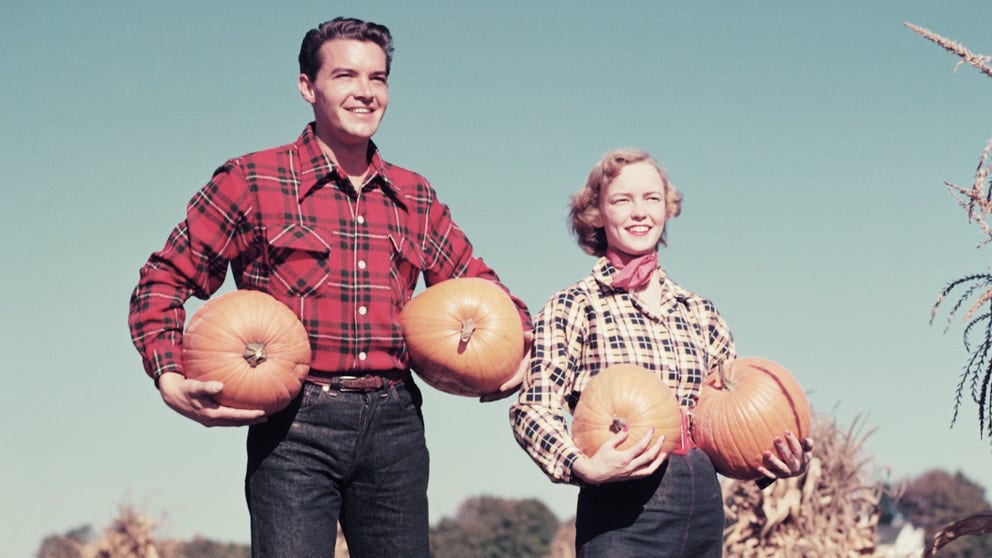How your leftover pumpkins can help feed farm animals
Put your gourds to good use by feeding them to farm animals, and preventing food waste from going to the landfill.
FILE: How the humble pumpkin became an American icon
From a vegetable of necessity to an edible icon, learn how the humble pumpkin experienced a dramatic transformation in American culture.
Pumpkins are a symbol of fall, with many adorning homes leading up to Halloween and even after Thanksgiving. But what happens to the gourds once the fall holidays are over?
While many of the pumpkins used for decoration often end up in landfills, the organization Pumpkins for Pigs gives the public a chance to put their gourds to good use – feeding hungry farm animals.
According to the U.S. Department of Agriculture, about 1.6 billion pumpkins are produced and make their way to consumers each year. The nonprofit hopes to prevent a good chunk of those gourds from being wasted.
"So 24% of our landfills are food waste, and so, every pumpkin, whether it's the itty-bitty ones or it's the very large jack-o'-lanterns, makes a difference," Pumpkin for Pigs founder Jennifer Seifert said.
In 2023, the nonprofit estimates it prevented 800 tons of food waste from going to the landfill, preventing 334 tons of carbon dioxide from being produced at the landfill, which also considers the fact that farm animals do produce some CO2.
Pumpkins for Pigs makes this possible by helping people donate their pumpkins to sites, such as farms and animal sanctuaries, which then feed the nutrient-rich gourds to animals.

Pigs eat a pumpkin.
(Brendon Thorne / Bloomberg / Getty Images)
The animals that usually feast on pumpkins are pigs, goats, sheep, bovines, horses, donkeys, chickens, geese and other fowl, the organization said.
To ensure the animals are given pumpkins that are safe to eat, Pumpkins for Pigs asked that the pumpkins are free of mold and only decorated using the following:
- Water-based paints, markers and glue.
- Tissue paper.
- Dried flowers.
They also ask that the pumpkins are preserved by only using vinegar and water.

Painted pumpkin.
(Julia Rasch / Unsplash / FOX Weather)
Seifert said Pumpkins for Pigs is hoping to support more donations in more communities. Any farms or animal sanctuaries can register for free at the nonprofit's website.
People can donate their pumpkins by finding a donation site nearby here. Pumpkins for Pigs has donation sites in every state except for Alaska, Nebraska, Nevada, North Dakota, Utah and Washington, D.C.
While pumpkins are the main donated item, Pumpkins for Pigs also works with donation sites that accept items such as fruits, vegetables and bread, along with undecorated evergreen trees and wreaths. Pumpkins for Pigs also works with local food banks, accepting food waste.
"We have really outgrown our namesake," Seifert said. "And that's because of these relationships with the donation sites on what they needed. So we started out with pumpkins and gourds and hay bales and all of those sorts of things, and we added Christmas trees pretty quickly because we realized that folks did not have the opportunity to do curbside pickup in all areas, and the goats loved them."
During the coronavirus pandemic, the nonprofit started accepting backyard garden extras.
"People were building these massive gardens because they were at home and they had the time. But then they weren't going into an office, and they only had so many neighbors to give that out to," Seifert said of pandemic gardens. "So who could they give them to? And we said you could take them back to the farms because that's really, really nutritious food."
Founded in 2017, Pumpkins for Pigs is a nonprofit that uses all donations to support its programs, pay for food transport and spread the word about the organization. This year, they hope to meet a $10,000 fundraising goal with a donation match through Benevity. Donations can be doubled through corporate match programs like the American Online Giving Foundation.
Visit Pumpkins for Pigs' website here for more information on what you can donate to help feed farm animals.
